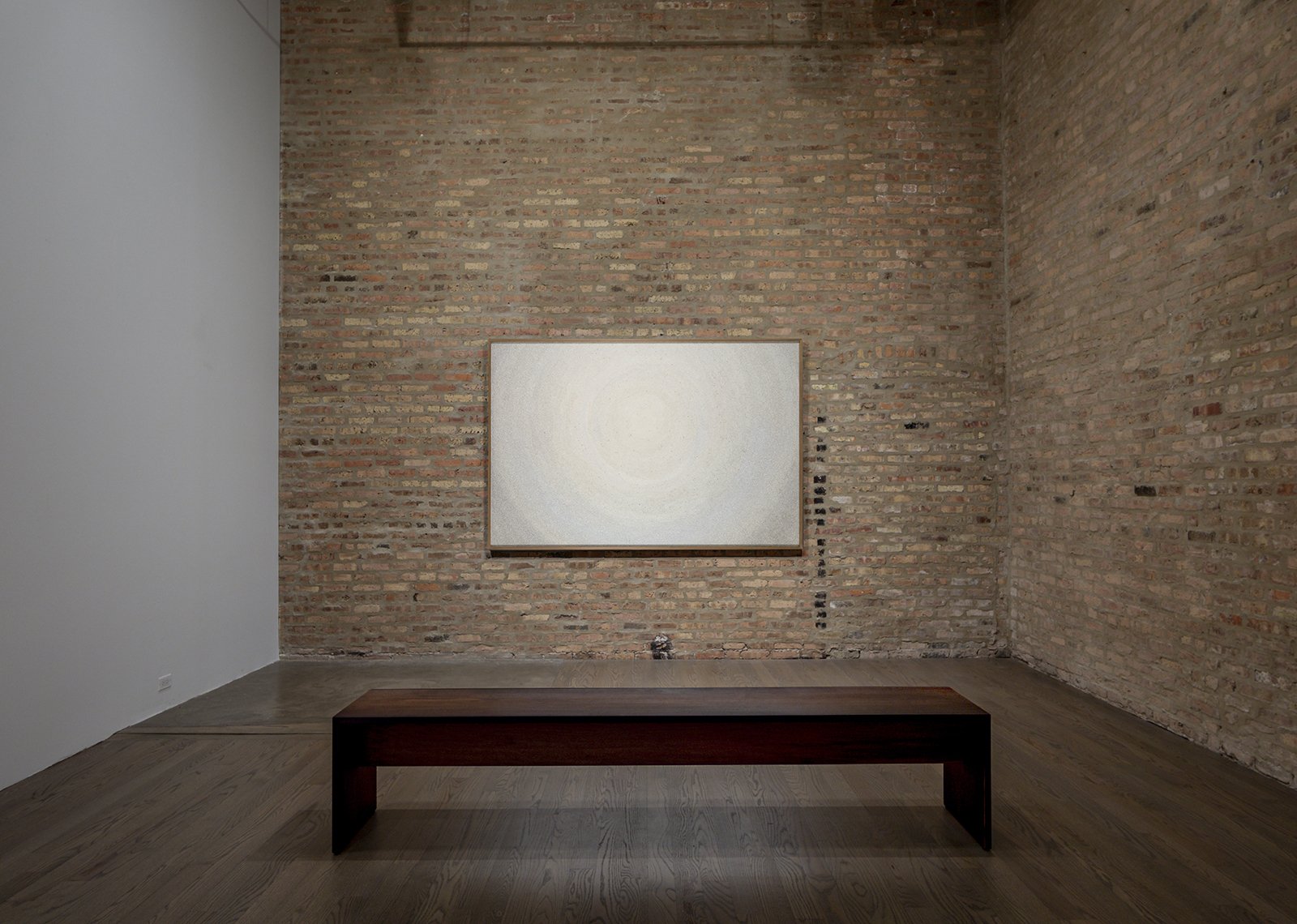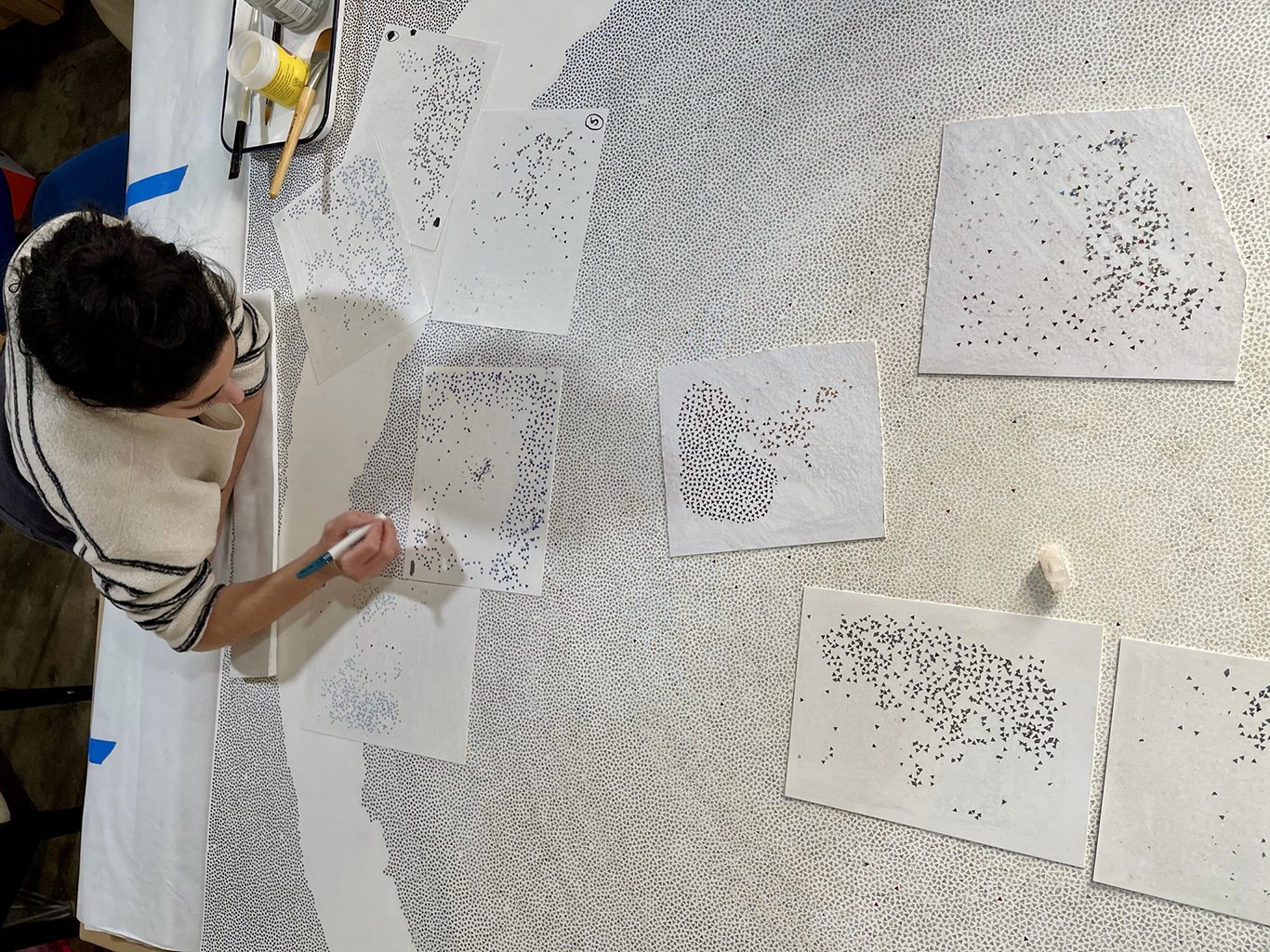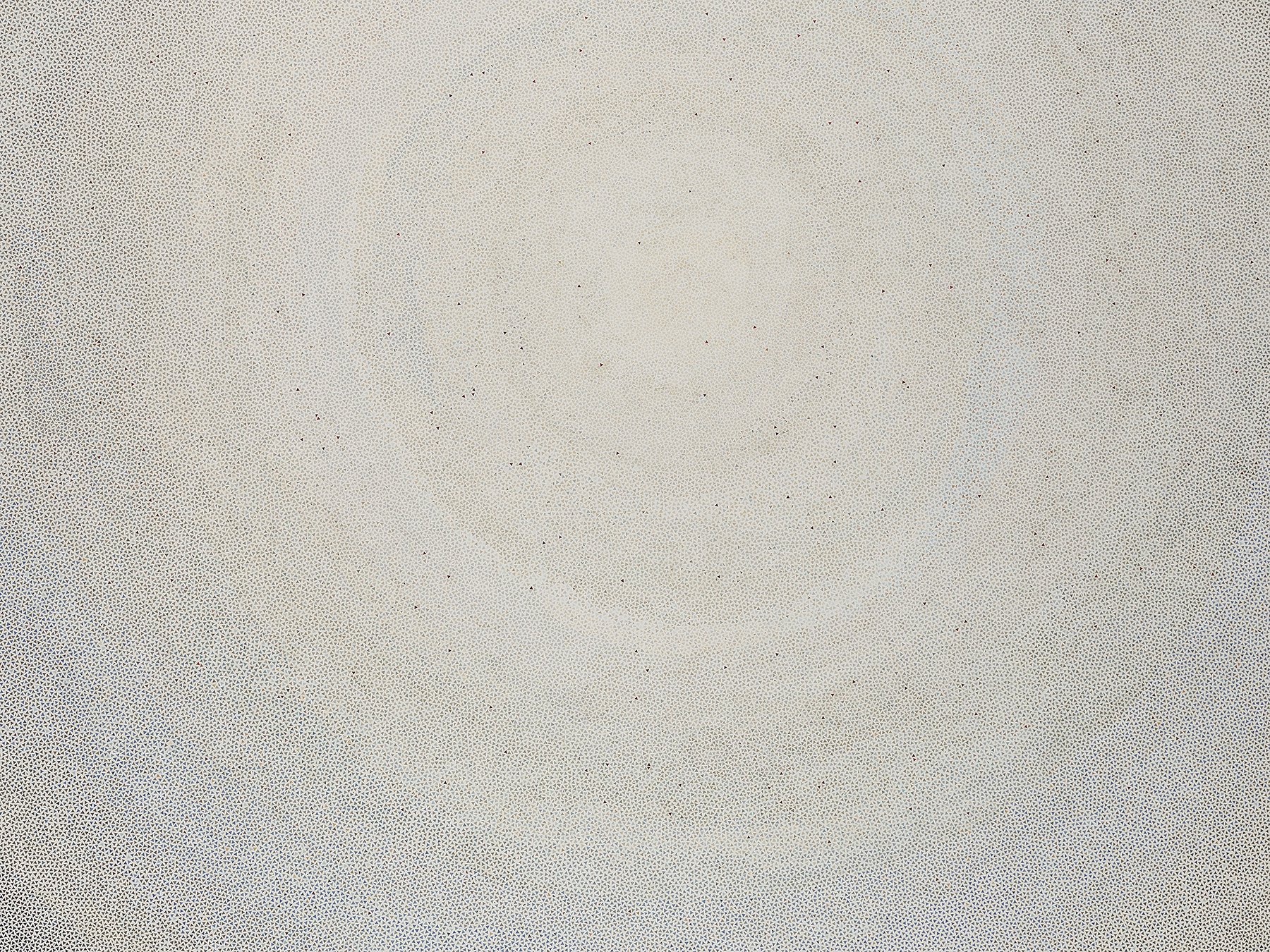Beyond the Limits of Representation: A Deconstructed Narrative of the War in Syria



Suppose there is something we can be sure of regarding contemporary media. In that case, it is their lack of objectivity, or rather a quasi-structural impossibility of being objective, for reasons ranging from the ideological background of the editors and the stakeholders financing media outlets to the primary fact that there is no unbiased, objective truth about events to be conveyed. Yet, most readers unwittingly fall into the trap of the news narratives constructed by television, print magazines, and electronic media. These narratives shape our vision of the world, mainly when they concern events occurring in regions that we know very little about, such as conflicts in the Middle East and their consequences or the so-called "European refugee crisis."
Over the past two decades, many artists have attempted to address the media representation of wars in Iraq, Afghanistan, and Syria, particularly the unprecedented media overexposure of its victims. Still, most have focused on the images that create a particular iconography of war and exile, while these images are only part of a larger media structure. In her recent works, this structure has become the central preoccupation of Los Angeles-based artist Samira Yamin. This is reflected in her latest piece, an abstract and meditative composition entitled All the Skies Over Syria, created between 2018 and 2021.
Media and Vernacular Watching
All the Skies Over Syria epitomizes Yamin's long-term interest in working with TIME Magazine, an iconic print media outlet that has survived — despite the emergence of new media — has international reach and continues to construct its narrative of our century's most significant conflicts. Since 2009, the artist has almost exclusively used TIME Magazine as a medium, creating a series of projects revolving around the theme of war reporting. Before undertaking the meticulous work that resulted in All the Skies Over Syria, she had been tackling the issue of how TIME Magazine structured the coverage of the wars in Iraq and Afghanistan (Geometries, 2009- ongoing) and the "War on Terror" (We Will Not Fail, 2013). Previous projects have not only allowed Yamin to dive into the magazine's structure and truly engage with it — instead of remaining a passive reader — but may have also led her to define her aesthetics as deeply rooted in the Islamic art tradition of sacred geometric patterns.
Since the inception of her work using TIME Magazine, Yamin has been much more interested in this invisible structure that articulates the narrative and readers' reception of the events than in the content of the representation itself. She has noticed that, not unlike the patterns she uses in her art, the magazines also have a particular structure that creates a coherent worldview. In other words, both serve “to create a narrative of the universe as a place of structure," as she says. The structure given by the patterns has become her way to see into the magazine. By mapping, cutting, overlaying, and replacing images depicting war zones — and the prominent figures in the reported event — with geometric patterns, Yamin continuously deconstructs TIME Magazine's narrative, exposing the readers to the mechanisms of its fabrication.
Artistic intervention in the magazine's structure provokes a different engagement with the medium and helps the viewer-reader interrupt the cycle of vernacular watching or reading. The term "vernacular watching" was first coined by the visual culture theorist Nicholas Mirzoeff in his book “Watching Babylon: The War in Iraq and Global Visual Culture.” The author uses it to describe how the constant flow of war images, mainly on television but not exclusively, has been consumed by Western societies living in an era of visual and media saturation. He writes:
“Based on work in feminist media studies and cultural studies, vernacular watching refers to the divergent and diverse act of looking in everyday life by which individuals become situated as visual subjects. Watching (…) is the wide variety of things we do and places we are when we watch television. At the same time, vernacular watching tends to emphasize those moments of drift in which the attention is not fully engaged in gazing at visual media. (…) Vernacular watching is perhaps epitomized by the looking that is done while waiting, whether in a formal waiting room, in a car, or for some appointment. Waiting engenders boredom and distraction, the marks of a certain counter to modernity as Walter Benjamin has described them. Consequently, vernacular watching takes place in the corner of one’s eye, the passing detail that catches a glance or the sideways look at a fellow waiter.” (Mirzoeff 2004, p. 30)
Reading TIME Magazine often revolves around a very similar level of engagement. It is akin to flipping through pages distractedly with brief pauses for articles or images that happen to capture our attention a little longer. Such a vernacular reading or viewing of the magazine prevents the reader from noticing the role of the media itself and its invisible structure. With her works, Yamin aims to direct our attention to "how it is narrated" rather than "what is narrated." Turning images into geometric patterns is her method of untangling the narrative's threads that tend to be univocal, focused on presenting these regions as places of perpetual war.
From the Peripheries to the Center
At first glance, All the Skies Over Syria seems to have nothing in common with war or its representation. An 87" x 58" white rag board covered with over one hundred thousand tiny triangles creating a huge abstract pattern remains as minimalist and calm as any fan of sober abstraction can imagine. But it is a work about war and people's suffering, encompassing nine years of representation of Syria in one frame.
To create All the Skies Over Syria, Yamin collected every image depicting Syria or Syrians in TIME Magazine between March 2011 and December 2019. She transformed the visual material into a mosaic-like composition. The originality of the work springs from the artist's deliberate choice to use only the peripheral parts of the photographs extracted from the magazine, the ones representing the sky. As she explained in an artist talk given on the occasion of her exhibition at PATRON Gallery in 2021, "a sky is not a thing, it's a space of light, and by the fact of being photographed, it becomes a thing. It becomes content where you can point at the photograph and say: 'That's the sky.’ "
What is more, considering that light is a primary medium of photography, this means that by taking a picture of the sky, the photograph captures the light and makes it static: "It's very much the medium itself held in place," Yamin says. Something as fugitive as light and as secondary as the sky, which is merely a "background" to a depicted scene, becomes the very subject of her work and a metaphor for a place that has only been fixed in the imagination of many Western reader-viewers through the images reproduced by media such as TIME Magazine.
The sky, though secondary, is often responsible for setting the tone of the representation. A sky red from fire, a sky with a sandy undertone due to the pervasive dust, and then a sky gray from smoke – these images come directly to mind even before seeing any photographs from war zones. These are also the visual tropes that many media outlets rely on use when reporting on such events.
Yamin is perfectly aware of the different methods used by photographers and magazine editors to attract readers' and viewers' attention; All the Skies Over Syria invites us to defy the way of reading-looking conditioned by the very structure of the magazine. Even though Yamin's practice is firmly situated in photography, she consistently deconstructs photographic representation to create a different narrative of events and places.
Photographs are the starting material for All the Skies Over Syria, but the artist's technique transforms them in two ways. First, the typical schemes of press photography are eradicated when Yamin decomposes the images to extract only the skies. Second, she offers new temporality to the photographs' extracted parts. Yamin spent four years creating this handmade collage, arranging the varying tones of the skies into a coherent visual composition. This painstakingly diligent practice imbues the work, allowing the audience to engage with the original photographs differently. This is in part thanks to artistic mediation, poetically guiding the audience's focus to the margins of representation and the photographs being disconnected from the original context of the magazine.
Therefore, the reassembled pieces of the sky do not depict Syria per se but represent the continuity of the place, as the sky is one of the few things that cannot be destroyed and will resist any attempt at annihilation. Yamin's work enables the audience to shift their attention from the instantaneity of press photography centered on striking framing and strong emotions to the contemplation of the timelessness of the land and, more broadly, of the stability of the universe that makes the sky resist even the greatest horrors.
Overcoming the Limits of Representation
In All the Skies Over Syria, the artist arranges pieces of the skies by value: from the lightest parts of the photographs in the center to the darkest at the edges, creating an undulating composition with something utterly meditative, almost hypnotic about it. Circles made with small triangular pieces form an abstract design, attracting viewers' attention and intriguing them. The perfectly structured pattern opens up space for reflection. First, the viewer is enchanted by the aesthetic dimension of the artwork, captivated by the precision of the artistic gesture capable of creating such a visually appealing work from multiplied geometric forms. Then, this purely aesthetic fascination naturally turns into a meditative experience. The very structure of the elements makes us think of the structured order of the universe and instills metaphysical awe in us. Exactly like patterns in the sacred geometry of Islamic art that aim to articulate the infinite nature of the universe and its inherent design, Yamin's work unveils the structure of representation of a place by using its most permanent yet overlooked part — the sky.
There is also another meaningful aspect of the artwork that emerged during the creative process. The artist had observed that the ink in the magazines used in her previous projects tended to change color with time. This is due to the poor quality of the paper and ink, as the magazine is not meant to last physically but to be consumed and thrown away.
When Yamin looked back at her works created several years ago, she noticed that the red ink — being the most fugitive — faded faster than the blue, which remained comparatively stable. In the context of All the Skies Over Syria, this adds another symbolic layer. We can expect that with time, all the shades of skies extracted from the war images published in TIME Magazine will become a unified camaieu of a peaceful blue sky.
With her work, Yamin has not only succeeded in encouraging her audience to look at Syria from a different perspective and be more conscious of the media's manipulation of our perceptions. She has also taken a step towards overcoming the limits of representation. Exposing this kind of visual manipulation and representing war and suffering ethically in art, i.e., without making the same mistakes as the media, is a great challenge that artists often fail to meet. By choosing the path of abstraction, Yamin also introduces a critical distance into her work. She gives it a powerful dimension as All the Skies Over Syria enchants viewers before confronting them with its subject matter — metaphorized here by the sky — a war-torn country and how the media portrays it.
Between the reproducible and the handmade
Yamin's piece emanates a sort of aura derived from its very meditative pattern structure discussed above, but not only. We can quickly identify another type of aura, which Walter Benjamin, in his essay "The Work of Art in the Age of Mechanical Reproduction," attributed to a unique and aesthetically stunning handmade work of art standing out from the mechanically reproduced ones. The craftsmanship of this piece is impossible to ignore; the viewer can sense the artist's devotion to her long process of creation and her very intimate relationship with the subject.
With such a profound intervention in the images extracted from the magazine, by means of a handmade collage transforming the mechanically reproduced photographs into a painting-like mosaic, Yamin brings into dialogue the reproducible and the handmade, the throw-away economy of the 21st century and the long tradition of Islamic sacred geometry. All the Skies Over Syria can be read in this context as a poetic manifestation of her opposition to the propagandist and objectifying nature of media narrative and a peculiar asynchrony related primarily to the printed media.
The paradox is that in the age of constant news flow, when the new issue of a magazine is published on a weekly, in the case of TIME, or daily basis, the physical magazine is doomed to be destroyed and quickly replaced by a new one, but the narrative built up over years of successive publications persists in the memory of the reader-viewers. The printed physical images may fade or be shredded, but the mental image of Syria, biased by what the media has told and shown us about it, will still be more than vivid and will continue to affect our view of events.
In her project, Yamin tries, in a way, to reverse this mechanism: save and revive the printed photographs cut out of the magazine to symbolically deconstruct this mental image of Syria imprinted in the minds of the reader-viewers. With this poetic gesture, she partially restores the lost aura to the pieces of a mechanically reproduced magazine, here preserved from disappearance and organized into a sacred geometric pattern reflecting the inherent and eternal structure of the universe but still referring to a very concrete land.
The artist's choice to embrace the traditions of Islamic art, so crucial to the region's culture, helps the audience to consider the subject of her work from a different perspective. Indeed, the richness, craftsmanship, and characteristics usually associated with Islamic art are skillfully reflected in the particular patterns of All the Skies Over Syria. The decorative dimension of the abstract composition is counterbalanced by the explicit reference to sacred geometry in a way that offers the viewer both aesthetic pleasure and a more profound reflection. Still, this reflection is universal, far from forcing any religious reading, which only strengthens the meaning of the work.
Ewelina Chwiejda. March, 2023.
——————————————————————————
Image list:
All the Skies Over Syria
2018-2021
all the skies from all the photographs of Syria/ Syrians in TIME Magazine from March 2011- December 2019
87” x 58”
Included (in order):
1- Installation View at PATRON Gallery, Chicago
2- In Progress
3- Detail
All images courtesy of the artist, with the exception of image 1; Installation View at PATRON Gallery, Chicago, courtesy of PATRON Galley..
——————————————————————————
Samira Yamin’s interdisciplinary practice cultivates an ethics of viewership as an active position, with the potential to make dynamic otherwise static depictions of people and places represented exclusively through war, disaster and suffering. Pulling pages directly from TIME Magazine, Yamin’s meticulous, hand-carved patterns draw out the invisible structures inherent in print media, and imbue source images with a sense of awe, wonder and curiosity not usually associated with the news magazine. Yamin’s work has been the subject of solo exhibitions at the Santa Monica Museum of Art (now ICALA), Los Angeles Municipal Art Gallery and PATRON Gallery and has been included in numerous group exhibitions including at the Craft and Folk Art Museum (now Craft Contemporary), Camera Club of New York, Metropolitan State University in Denver, and San Francisco State University. A recipient of grants from the Joan Mitchell Foundation, California Community Foundation and Foundation for Contemporary Arts, Yamin has been an Artist in Residence at the Rauschenberg Residency, Headlands Center for the Arts, Penumbra Foundation, Djerassi Resident Artists Program and Galveston Artist Residency. Yamin received an MFA from UC Irvine and BAs in Art and Sociology from UCLA. She lives and works in Los Angeles.
——————————————————————————
